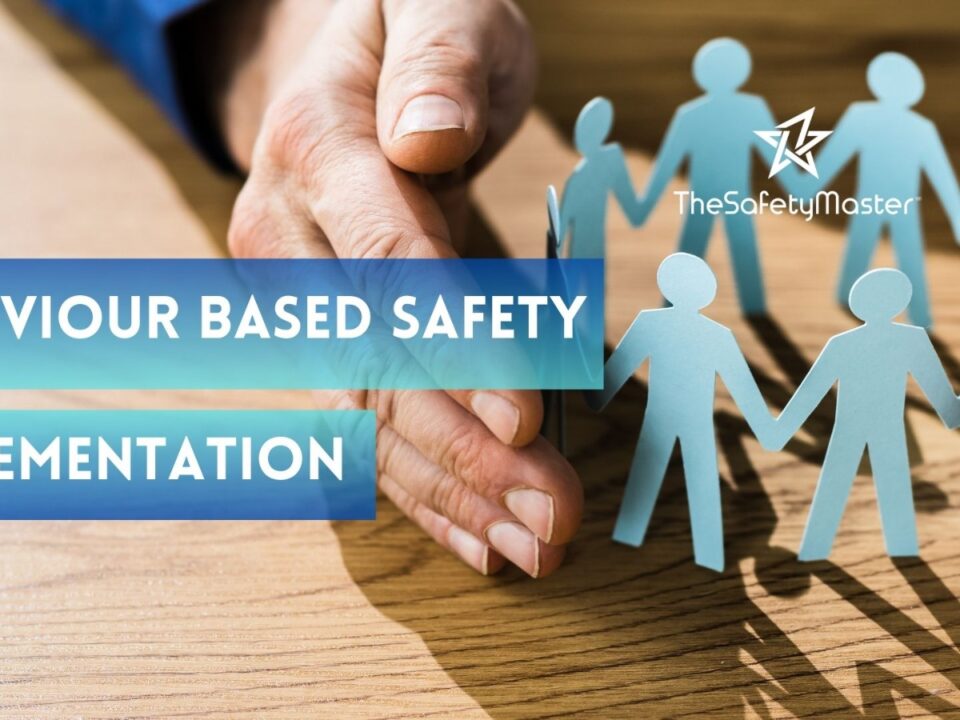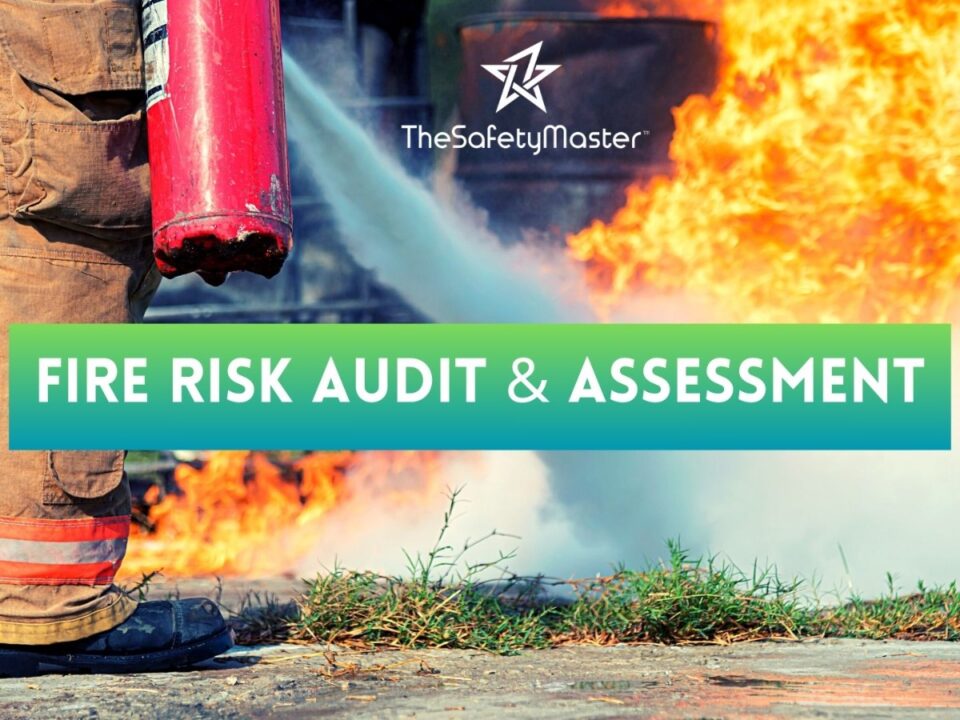Crafting a Successful Behavior-Based Safety Implementation Program: Key Considerations and Best Practices

The Role of HAZOP Study in Identifying and Managing Operational Hazards in Indian Chemical Manufacturing
November 3, 2023
Fire Risk Assessment in Indian Industries: Identifying Potential Hazards and Implementing Safety Measures
November 6, 2023In this article, we delve into the intricacies of crafting a successful Behavior Based Safety (BBS) implementation program. Workplace safety is a paramount concern for every organization, and the effectiveness of a BBS program can significantly impact the overall safety culture and performance. We will discuss key considerations and best practices that can optimize your BBS program and drive tangible results. Get ready to explore the essential elements necessary for a thriving safety culture, and uncover valuable insights to enhance your organization’s safety efforts. Brace yourself for practical tips, informed strategies, and a roadmap to achieving excellence in safety. So, let’s delve into the world of BBS and unlock the power of a safer workplace.
Introduction
imagine a workplace where employees are actively engaged in creating a safer environment, where safety becomes an integral part of everyday operations. A place where accidents and injuries are significantly reduced, leading to improved productivity and enhanced employee morale. Such a workplace is not merely a utopian dream but an achievable reality through the implementation of a Behavior Based Safety (BBS) program. In this comprehensive article, we will explore the key considerations and best practices for crafting a successful Behavior Based Safety Implementation Program. We will delve into the various aspects that contribute to the effectiveness of such programs, ranging from stakeholder involvement to training strategies, supportive leadership practices to communication methods. By the end of this article, you will gain valuable insights and practical guidance on how to establish and sustain a behaviour-based safety culture in your organization
Understanding Behavior Based Safety
Understanding Behavior Based Safety: Behold, the intricacies of Behavior Based Safety unfold before us like a tapestry woven with threads of knowledge and insight. This approach to safety management transcends mere compliance, delving deep into the realm of human behaviour. It acknowledges that behind every incident lies a web of actions, reactions, and choices.
Behavior Based Safety embraces the notion that by understanding why individuals act as they do, we can reshape attitudes and beliefs towards safety. It recognizes that behaviour is influenced by a multitude of factors – from intrinsic motivations to external stimuli – and seeks to unravel this complexity. By examining behavioural patterns in various contexts, we can uncover the root causes of unsafe actions and forge a path towards prevention.
In this realm, safety becomes more than rules and regulations; it becomes an art form where every brushstroke represents an opportunity for growth and improvement. Let us embark on this journey of understanding together, for within lies the power to transform workplaces into havens where safety is not just a priority but an integral part of our collective consciousness.
Benefits of Implementing a Behavior Based Safety Program
Benefits of Implementing a Behavior Based Safety Program: Implementing a Behavior Based Safety (BBS) program can yield numerous advantages for organizations seeking to promote a safe and healthy work environment. Firstly, BBS programs foster a strong safety culture by emphasizing individual accountability and responsibility. Employees become more aware of their behaviours and actions, leading to reduced incidents and accidents.
Furthermore, BBS programs empower employees to actively contribute to the improvement of workplace safety. By encouraging open communication and reporting of near misses or hazards, organizations can identify potential risks before they escalate into serious incidents. This collaborative approach enhances employee engagement and fosters a sense of ownership in maintaining a safe workplace.
Moreover, implementing a BBS program offers long-term cost savings for organizations. By mitigating risks and preventing accidents, companies can avoid costly medical expenses, legal liabilities, worker compensation claims, and property damage repairs. Ultimately, investing in safety measures not only protects employees but also positively impacts the financial health of the organization as it reduces downtime and improves productivity.
By promoting safety consciousness among employees, empowering them to actively participate in risk reduction efforts, and driving cost savings through accident prevention measures – implementing a Behavior Based Safety program creates an organizational culture where everyone feels responsible for their own safety as well as that of their colleagues.
Key Considerations for a Successful Implementation
Key Considerations for a Successful Implementation: Anchoring a successful Behavior Based Safety (BBS) program requires careful considerations and strategic planning. The first crucial step involves identifying and involving stakeholders across all levels of the organization – from top management to frontline workers. By engaging stakeholders, you create a sense of shared responsibility, making it easier to gain buy-in and commitment towards the program’s success.
Establishing clear goals and objectives is another pivotal consideration. Clearly defining what you aim to achieve through your BBS implementation program creates a sense of direction and purpose for all involved. Whether it’s reducing accident rates, improving safety culture, or enhancing employee engagement, setting concrete goals motivates individuals to work collectively towards achieving them.
In order to ensure understanding and adoption of BBS principles throughout the organization, developing a comprehensive training program is essential. This training should encompass not only the technical aspects but also emphasize the importance of individual accountability and proactive safety behaviours. By providing employees with the necessary knowledge and skills, they become empowered to identify potential hazards and take appropriate actions to prevent incidents.
By carefully considering these key elements when implementing a Behavior Based Safety program, organizations set themselves up for success. Engaging stakeholders, setting clear goals, and delivering comprehensive training are foundational steps that contribute to creating an optimistic safety culture where everyone feels valued in their role as guardians of workplace well-being.
Identifying and Involving Stakeholders
Identifying and Involving Stakeholders: Engaging stakeholders is a crucial step in the implementation of a behaviour-based safety program. Stakeholders are individuals or groups who have an interest or influence in the program’s success. They can range from employees at all levels to management, external consultants, and even unions. By involving various stakeholders, you can harness their expertise and perspectives, ensuring a holistic approach to safety improvement.
To identify stakeholders, start by conducting a thorough analysis of your organization’s structure and culture. Consider employees directly involved in safety operations, such as frontline workers and supervisors, as well as those indirectly affected, like HR personnel or maintenance teams. Engaging union representatives is vital for fostering collaboration and garnering support from the workforce.
Involving stakeholders early on creates a sense of ownership and commitment towards the behaviour-based safety program. By sharing the vision behind the initiative and emphasizing its potential benefits for everyone involved, stakeholders will feel valued and motivated to contribute actively. Encourage open dialogue throughout the process, welcoming suggestions and addressing any concerns raised. Remember that a strong network of engaged stakeholders will lay the foundation for successful program implementation that prioritizes employee well-being above all else.
Establishing Clear Goals and Objectives
Establishing Clear Goals and Objectives: Creating a solid foundation for a successful behaviour based safety implementation program requires the establishment of clear and well-defined goals and objectives. This crucial step sets the direction for the entire initiative, providing a roadmap that guides employees towards achieving success while upholding safety standards.
In setting goals, it is essential to ensure they are specific, measurable, attainable, relevant, and time-bound (SMART). For instance, instead of aiming for “reduced accidents,” a SMART goal could be “Reduce workplace accidents by 20% within six months by implementing proactive safety measures and promoting employee engagement.” This goal provides clarity by quantifying the desired outcome and emphasizes an optimistic approach towards accident prevention.
Moreover, objectives should align with organizational values and address specific safety concerns. By involving stakeholders from various departments, their unique insights can be integrated into objective-setting discussions. This inclusive approach fosters a sense of ownership among employees while cultivating a positive work environment cantered on collective responsibility for safety outcomes.
Developing a Comprehensive Training Program
Developing a Comprehensive Training Program: Crafting an effective Behavior Based Safety (BBS) program requires a robust training component that equips employees with the knowledge and skills necessary to perform their tasks safely and contribute to an overall culture of safety. The training program should encompass a diverse range of topics, including hazard identification, risk assessment, and safe work practices.
To ensure the success of the training program, it is crucial to tailor the content to the specific needs of different job roles within the organization. This means considering factors such as job requirements, level of risk exposure, and previous safety knowledge. By customizing the training materials accordingly, employees will feel more empowered and engaged in their learning journey.
Furthermore, incorporating interactive elements into the training sessions can significantly enhance retention and application of learned concepts. Utilizing techniques such as hands-on demonstrations, group discussions, and case studies allow employees to actively participate in their learning process. Ultimately, this results in a more comprehensive understanding of safety practices and promotes a culture where safety is prioritized by all members of the organization.
Creating Supportive Leadership and Management Practices
Creating Supportive Leadership and Management Practices:
Nurturing a culture of safety requires strong leadership and supportive management practices. The success of a behaviour-based safety implementation program heavily relies on the commitment and involvement of leaders at all levels. True leaders understand that safety is not just another item on the agenda, but rather an integral part of every task and decision. In order to foster supportive leadership, it is crucial for managers to lead by example. This involves actively participating in safety activities, consistently following safety protocols, and demonstrating a genuine concern for the well-being of their employees. By embodying this commitment to safety, leaders inspire trust and motivate their teams to prioritize safe behaviours.
Moreover, effective management practices play a pivotal role in creating a supportive environment for workers. This entails providing adequate resources and training to ensure employees have the knowledge and tools necessary to carry out their tasks safely. Additionally, managers should regularly communicate with their teams about safety expectations, addressing any concerns or questions promptly. By establishing clear lines of communication, managers foster collaboration between workers and management, leading to enhanced risk awareness throughout the organization.
Ultimately, when leaders prioritize safety as an inherent value within the workplace culture and demonstrate unwavering support for safe behaviours, employees are empowered to take ownership of their own well-being. This inclusive approach not only enhances overall organizational performance but also cultivates a positive work environment where everyone feels valued and protected
Implementing Effective Communication Strategies
Implementing Effective Communication Strategies: In order to foster a successful Behavior Based Safety (BBS) implementation program, effective communication strategies play a pivotal role. Clear and concise communication is the thread that weaves together the various elements of the program, ensuring that everyone involved is on the same page and working towards a common goal.
One key aspect of effective communication in BBS is creating an open and transparent culture where employees feel comfortable voicing their concerns, ideas, and suggestions. This can be achieved through regular safety meetings, toolbox talks, and other forums that encourage dialogue between management and workers. By actively listening to employees’ feedback and incorporating their input into safety initiatives, organizations can cultivate a sense of ownership and collaboration among team members.
Additionally, utilizing multiple communication channels is crucial for reaching all levels of the organization. While face-to-face interactions are valuable for building relationships, technology-driven platforms like email newsletters or intranet portals can serve as efficient tools for disseminating important safety information to a larger audience. By embracing a diverse range of communication methods, organizations can ensure that their safety messages are accessible to everyone, fostering engagement and participation throughout the BBS implementation process.
Remember: Good communication builds trust, instils confidence in the program’s effectiveness, and empowers individuals to take an active role in creating a safer work environment.
Monitoring and Evaluating the Program’s Effectiveness
Monitoring and Evaluating the Program’s Effectiveness:
A critical aspect of a successful Behavior Based Safety (BBS) implementation program is the ongoing monitoring and evaluation of its effectiveness. This allows organizations to assess whether the program is achieving its intended goals, identify areas for improvement, and make informed decisions to enhance workplace safety. When it comes to monitoring and evaluating a BBS program, several key considerations come into play. The first step is to establish clear performance indicators aligned with the program’s objectives. These indicators can include metrics such as incident rates, near-miss reports, employee participation rates, and changes in safety culture measures. Regular data collection allows for systematic analysis, enabling organizations to track trends over time and identify potential areas of concern or success.
To ensure accurate evaluation, it is crucial to employ a variety of evaluation techniques. This can include analysing quantitative data alongside qualitative feedback from employees through surveys or focus groups. By combining both types of data, organizations gain a comprehensive understanding of the program’s impact on individual behaviour and overall safety culture.
Ultimately, an effective monitoring and evaluation process not only provides valuable insights but also supports continuous improvement efforts. Organizations that regularly evaluate their BBS programs can make informed adjustments based on data-driven evidence, fostering an environment that prioritizes safety while inspiring confidence among employees that their well-being matters.
Addressing Challenges and Overcoming Resistance
Addressing Challenges and Overcoming Resistance: Navigating the treacherous waters of implementing a Behavior Based Safety (BBS) program can be met with resistance from various quarters. However, by adopting a proactive approach and leveraging effective strategies, these challenges can be overcome, leading to the successful integration of BBS into your organization’s safety culture.
One major challenge is employee scepticism and resistance towards change. It is crucial to address their concerns through open dialogue and transparent communication. Encourage employees to voice their opinions and provide them with comprehensive information about the program’s benefits. This fosters a sense of ownership and empowers them to become active participants in the implementation process.
Another obstacle may come from middle management reluctant to embrace change. By engaging these key players early on, you can alleviate their fears and gain their support. Providing training specifically tailored for managers equips them with the necessary tools to understand and champion the BBS initiative within their respective teams.
Moreover, it is essential to anticipate potential pushback from individuals who fear negative consequences or perceive BBS as micromanagement. Assure employees that this program focuses on positive reinforcement rather than punishment, emphasizing its ability to drive continuous improvement while ensuring a safer work environment for all.
Ultimately, addressing challenges head-on not only allows organizations to overcome resistance but also creates an atmosphere of collaboration and empowerment. By highlighting the long-term benefits of a successful BBS implementation program – such as reduced incidents, improved morale, and increased productivity – organizations can build momentum for change while ensuring a brighter future for their workforce
Best Practices for Sustaining a Behavior Based Safety Program
Best Practices for Sustaining a Behavior Based Safety Program: Maintaining Momentum and Continual Improvement:
Once a behaviour based safety program is implemented, it is crucial to sustain the momentum and continually strive for improvement. This can be achieved by regularly reviewing and updating safety policies and procedures, conducting frequent safety audits, and involving employees in the ongoing development of the program. By consistently seeking ways to enhance safety practices, organizations can foster a culture of continuous improvement that keeps employees engaged and motivated.
Empowering Employees and Encouraging Ownership:
To sustain a behaviour based safety program, it is vital to empower employees at all levels of the organization. Encouraging ownership means providing opportunities for workers to actively participate in identifying hazards, suggesting improvements, and making informed decisions regarding their own safety. This not only fosters a sense of ownership but also cultivates a culture where individuals take personal responsibility for their actions and look out for each other’s well-being.
Recognizing and Rewarding Positive Safety Behaviours:
Recognizing and rewarding positive safety behaviours goes a long way in sustaining a behaviour based safety program. Celebrating achievements reinforces desired behaviours while motivating others to follow suit. Organizations can implement various recognition strategies such as employee-of-the-month programs, public acknowledgments during team meetings, or even small rewards like gift cards or additional time off. By highlighting efforts that contribute to a safer work environment, organizations create an atmosphere where employees feel appreciated for their commitment to safety.
By incorporating these best practices into the sustainability plan of a behaviour based safety program, organizations can ensure its long-term success while fostering an optimistic work environment where everyone feels empowered to prioritize safety every day.
Conclusion
In culmination, the successful implementation of a Behavior Based Safety program necessitates a meticulous approach that encompasses various considerations and best practices. By involving stakeholders, setting clear goals, providing comprehensive training, cultivating supportive leadership, fostering effective communication, monitoring progress, and addressing challenges head-on, organizations can create a safety culture that promotes the well-being of their employees. As this program becomes ingrained within the fabric of the organization’s operations and values, it has the potential to yield remarkable results. With each individual committing to safe practices and making behavioural changes for the greater good, workplace incidents can be significantly reduced or even eliminated altogether. The path toward a safer work environment is challenging yet achievable through perseverance and dedication to promoting a culture of safety. Remember: it is in our hands to create an environment where every employee returns home unharmed at the end of each day.




